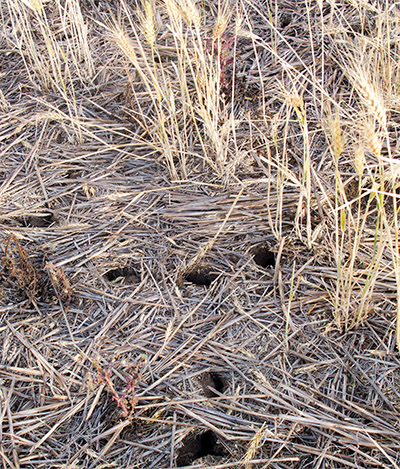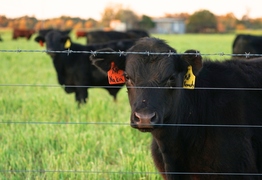CSIRO urges farmers to get ahead of mice breeding season
Lily Plass
29 March 2025, 8:20 PM
 The latest meeting of the National Mouse Group heard high mouse activity in Queensland. In NSW mouse numbers are not yet concerning. Photo: Peter Brown GRDC
The latest meeting of the National Mouse Group heard high mouse activity in Queensland. In NSW mouse numbers are not yet concerning. Photo: Peter Brown GRDCThe Commonwealth Scientific and Industrial Research Organisation (CSIRO) is cautioning farmers to keep mice population numbers low ahead of the breeding season.
"If you don’t do something about it now in autumn, you get into winter with high numbers of mice who start breeding from a high population base come spring," CSIRO researcher Steve Henry said".
"They're not at the proportions of 2020/21 but if farmers start sowing their crop in mid-April, they'll need to know what's going on in their paddocks in terms of mice.
Coonamble is one of the areas that has noticed a slight increase in mice numbers.
The bumper harvest season last year left behind plenty of feed for the mice.
"I've seen a slight increase but nothing to worry about yet," Blake Hodgson, a property manager from Coonamble said.
When CSIRO conducted a mice count on the property they counted eight mice.
"If it gets worse we'll start baiting before sowing," Mr Hodgson said.
Farmers can estimate the number of mice by counting the number of active burrows per 100 square meters.
The number of active burrows per 100 square metres can then give the landholder an indication of how many active burrows there are in a hectare.
"If you've got 100 burrows per hectare, then that means there are 200 mice per hectare," Mr Henry said.
"It doesn't sound like a lot but if 100 of those are females and they're having six to ten babies every 19 to 21 days, then it isn't long before you go from 200 to 700 mice."

Burrows are one of the best ways to confirm mice activity. Photo: GRDC.
To tell if a burrow is active, farmers can put out a small amount of cornflower and check the next whether mice have been coming or going.
After rainfall, mice also tend to clean out burrows showing signs of a disturbed entrance.
Mr Henry said baiting is the only effective tool to get rid of mice.
Zinc phosphide is the currently registered chemical for controlling mice in paddocks, however, it cannot be used around buildings, towns, and other residential areas.
Keeping the field as clean as possible during harvest and ensuring there is no other background food improves the efficiency of baiting.
"Even 40 kilos of background food per hectare can reduce the bait efficiency.
"Getting that background food down to the lowest levels possible is really important."
Mr Henry said 150 kilos of background feed per hectare can feed 1,000 mice through 50 days of summer.
"One of the best things we can do is harvest as clean as possible because that creates an environment less friendly for mice."



